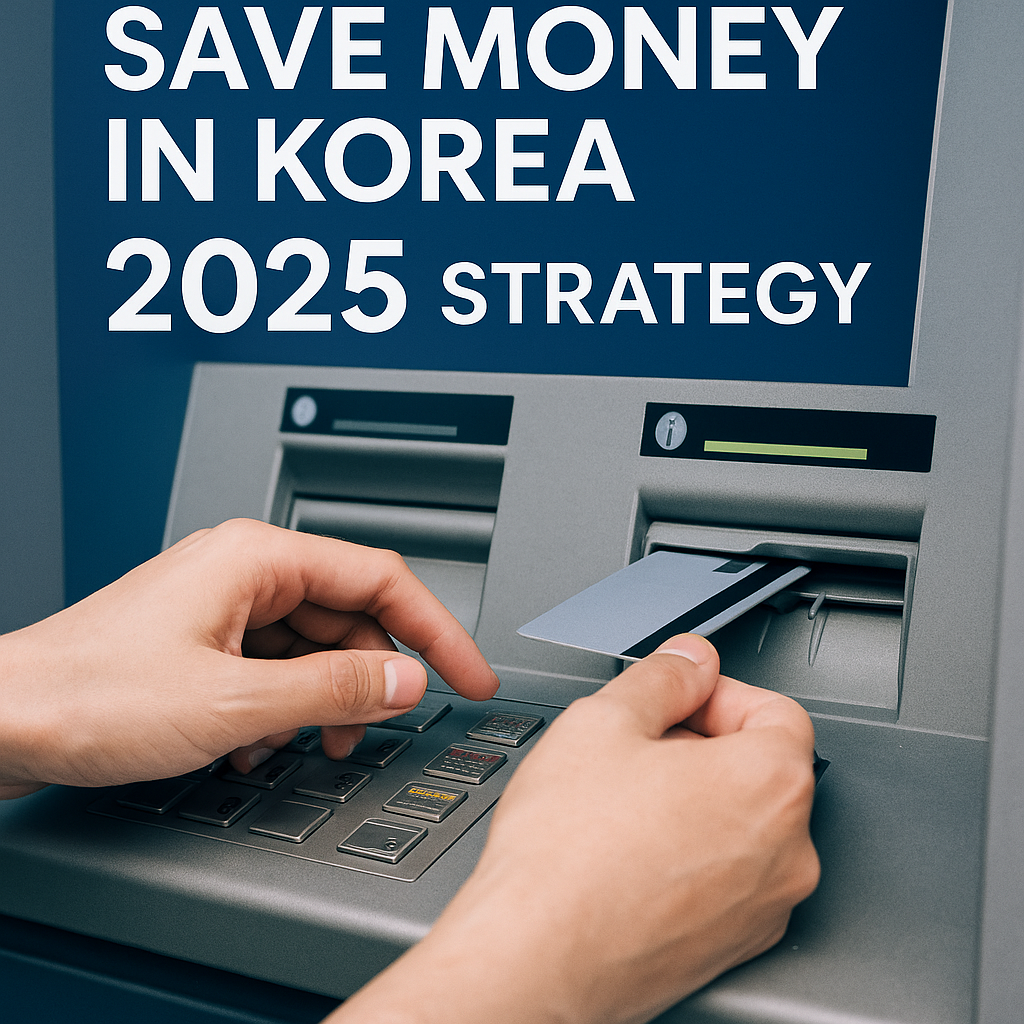Introduction
Although Korea is a highly card-friendly society, carrying a small amount of cash remains essential for certain transactions such as street markets, taxis, and rural areas. However, travelers often lose money through unnecessary fees during ATM withdrawals and currency exchanges. In this guide, we’ll show you how to minimize those losses with smart strategies that every savvy traveler should know.
Saving on ATM Withdrawals in Korea
Use Global ATM Networks
Look for ATMs with logos like Global ATM, Cirrus, or Plus. These machines are optimized for international cards and tend to offer better exchange rates with fewer additional charges.
➔ You can usually find them at major banks (e.g., KB Kookmin Bank, Shinhan Bank) and inside convenience stores like 7-Eleven.
Avoid Dynamic Currency Conversion (DCC)
If an ATM offers to charge you in USD instead of KRW (Korean Won), decline. Always opt for local currency (KRW) to avoid hidden conversion fees and poor exchange rates.
Choose Cards with ATM Fee Reimbursement
Several U.S. banks offer credit or debit cards that reimburse international ATM fees:
- Charles Schwab Bank High Yield Investor Checking Account: Unlimited worldwide ATM fee rebates.
- Fidelity Cash Management Account: No ATM fees anywhere globally.
- SoFi Checking and Savings: Refunds ATM fees at international ATMs.
If you have one of these cards, you can withdraw cash without worrying about extra costs.
Airport vs. City Currency Exchange: Which Is Better?
Why You Should Avoid Airport Exchange Counters
Airport currency exchange booths are extremely convenient but notoriously expensive. Rates can be 5–10% worse compared to city-based banks or specialized money changers.
If you must exchange at the airport, limit it to a minimal amount—just enough for initial transportation (like subway fare or a taxi ride).
Where to Get the Best Rates in the City
For the best rates, visit:
- Major banks such as KB Kookmin Bank, Woori Bank, and Hana Bank.
- Licensed currency exchange shops in tourist areas like Myeongdong or Hongdae (often better than banks for cash).
Always compare rates and ask about service fees before finalizing your exchange.
Optimal Timing for Exchange
- Exchange on weekdays (Mon–Fri): Banks are fully operational, and better rates are available.
- Avoid weekends and holidays: Banks are closed, and exchange counters may charge higher fees.
- Monitor exchange rates: Even a small shift of 1–2% can make a big difference for larger sums.
Tip: Some Korean banks offer online reservation systems for currency exchange at preferred rates. You can book online and pick up your cash at a branch or airport kiosk.
Best Cash vs Card Strategy in Korea
The smartest way to manage your money in Korea is to minimize the cash you carry and rely mostly on cards.
- Cash: Carry around 100,000–200,000 KRW ($75–$150) for small vendors, taxis, and emergencies.
- Card: Use a no-foreign-transaction-fee credit card for hotels, restaurants, shopping, and transportation.
This method keeps you protected against theft or loss, while maximizing rewards from card payments.
Conclusion
In 2025, smart travelers to Korea don’t simply exchange money—they optimize every dollar.
By using global ATM networks, choosing fee-reimbursing cards, avoiding airport traps, and balancing cash with card usage, you can stretch your budget further and travel with confidence.
Plan ahead, act smart, and make every cent work for you while exploring Korea.
